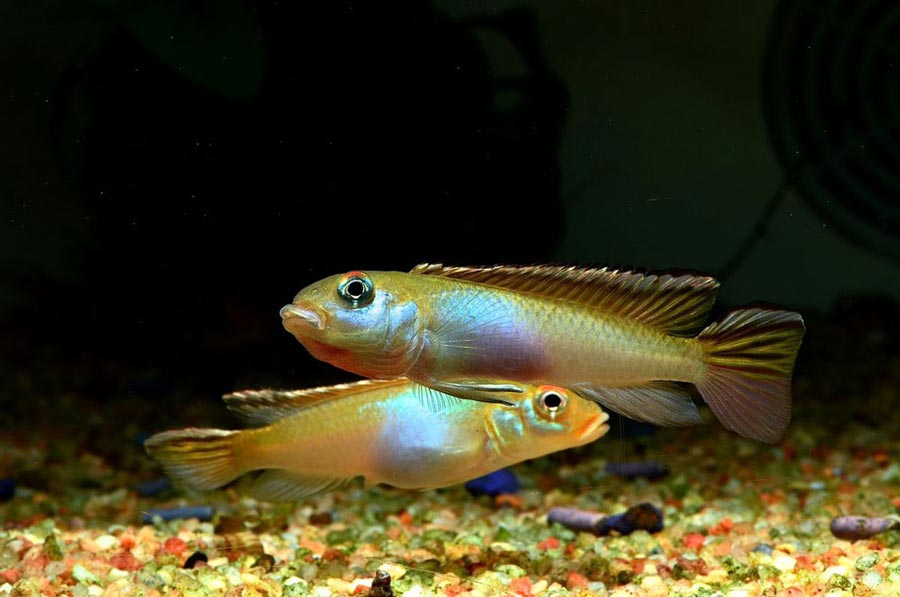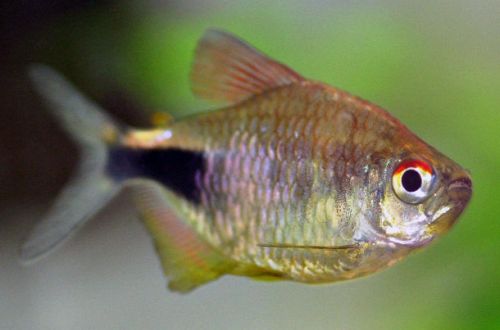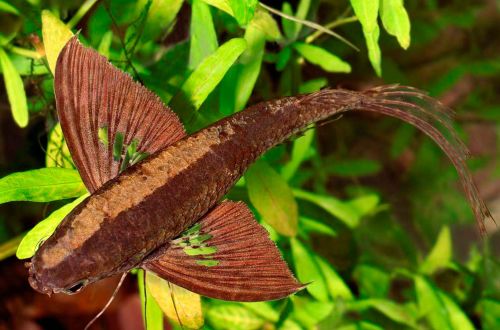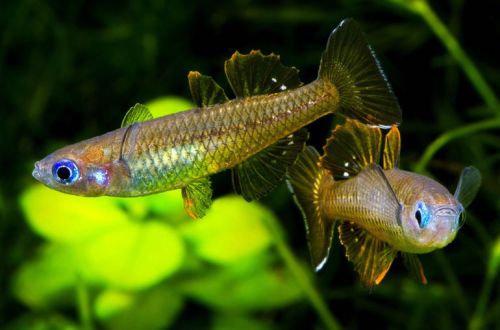
Nanochromis glossy
Nanochromis Parilus or Nanochromis glossy, scientific name Nanochromis parilus, belongs to the Cichlidae family. Not as beautiful a fish as other cichlids, it is poorly compatible with its relatives and also needs certain conditions of detention. All this significantly reduces the number of people who want to buy it.

Contents
Habitat
It comes from the equatorial part of Africa from the territory of the modern Democratic Republic of the Congo. It lives in the basin of the Congo River of the same name, prefers regions with a slow current and dense aquatic vegetation.
Brief information:
- The volume of the aquarium – from 55 liters.
- Temperature – 22-25°C
- Value pH — 5.5–7.0
- Water hardness – soft (1-8 dGH)
- Substrate type – sandy
- Lighting – subdued
- Brackish water – no
- Water movement is weak
- The size of the fish is 7–8 cm.
- Meals – any
- Temperament – conditionally peaceful, with the exception of spawning periods
- Keeping singly in a formed male/female pair
Description

Adult individuals reach a length of 7–8 cm. They have an elongated body, elongated dorsal and anal fins stretch from head to tail. The main color is light gray, in females a pinkish tint appears, in males it is blue. A feature of the species are the red rays on the tail and anal fin. Males, unlike females, are somewhat larger, and in the tail pattern there is a circle that looks like an eyepiece.
Food
They accept most popular dry foods (flakes, granules, etc.), which must contain protein. It is also advisable to serve live or frozen foods such as bloodworms, daphnia, brine shrimp.
Maintenance and care, arrangement of the aquarium
The optimal size of the aquarium for one pair of fish starts from 55 liters. The design should provide for areas with dense vegetation and many shelters, these can be snags, caves, grottoes, as well as simple ceramic pots turned over on their side. Nanochromis glossy likes to dig into the ground, so use a sandy or similar substrate. It is worth noting that such soil can clog the filtration system if it is not selected and / or installed correctly.
Water conditions have slightly acidic and mild pH and dGH values, respectively. To imitate the composition of water characteristic of the natural habitat, special essences of tannins or leaves of European oak, beech or Indian almond are used. An alternative way is to use a filter with peat based filter material.
Aquarium maintenance comes down to regular cleaning of the soil from organic waste, weekly replacement of part of the water (15–20% of the volume) with fresh water.
Behavior and Compatibility
Peaceful fish in relation to other species. It goes well with representatives of characins and some cichlids of similar size and temperament. Relationships within the species are not as friendly. Nannochromis Parilu form a permanent pair, which, with a lack of space, is very belligerent towards its relatives, especially during the spawning season. Therefore, only one pair of Nannochromis should be kept in a small aquarium.
Breeding / breeding
In the mating season, after a short courtship, from the outside they may seem quite aggressive, the fish choose a suitable place and dig a small hole. Usually the choice is stopping at the base of some driftwood or cave. The female lays up to 100 eggs and stays with them for the entire incubation period (2–3 days), while the male at this time is at a distance and protects the clutch from potential rivals and caviar lovers. Parents continue to take care of the offspring, even when they begin to swim freely, such guardianship can last from a couple of weeks to a month.
Fish diseases
The main cause of most diseases is unsuitable living conditions and poor-quality food. If the first symptoms are detected, you should check the water parameters and the presence of high concentrations of hazardous substances (ammonia, nitrites, nitrates, etc.), if necessary, bring the indicators back to normal and only then proceed with treatment. Read more about symptoms and treatments in the Aquarium Fish Diseases section.





